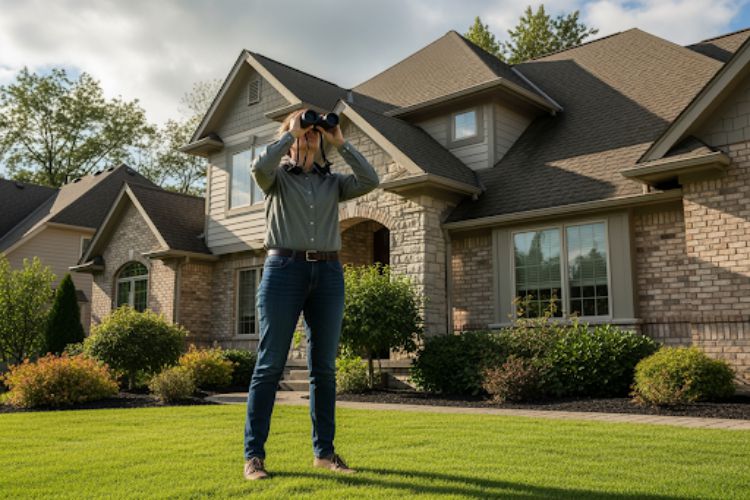Introduction: Assessing Your Roof’s Current Condition
Your home’s roof is its main shield against the weather. Over time, every roof shows some wear. When you notice signs of age or damage, a big question comes up: Should you repair, refresh, or replace it? This choice feels major. It impacts your home’s safety, value, and your budget. Finding the right Roofing Solutions is important for homeowners, no matter where you live. We aim to help you understand your options.
We know this decision can be tricky. We will walk you through how to assess your roof’s current state. This includes looking at its age, any warning signs you see, past leaks, and how local weather affects it. We will help you understand when a simple repair is enough, when rejuvenation can extend your roof’s life, and when a full replacement is truly needed.
Understanding Your Roof’s Story
Before making any decisions, it’s crucial to understand the full context of your roof’s condition. This involves several key factors:
- Roof Age: Knowing the age of your roof is perhaps the most fundamental piece of information. Most roofing materials have an expected lifespan. Asphalt shingles, for example, typically last between 20 to 30 years, while metal roofs can last 50 years or more. A roof nearing the end of its projected life will likely require more than just minor repairs. If your roof is relatively young, repairs or rejuvenation might be more appropriate.
- Visible Warning Signs: A thorough visual inspection can reveal a lot. Look for missing, cracked, or curled shingles. Are there dark streaks or moss growth? Is there an excessive amount of granules in your gutters? These are all indicators that your roof is aging or experiencing distress. We encourage homeowners to perform regular, safe visual checks from the ground or with binoculars.
- Leak History: Has your roof had persistent leaks, or are they isolated incidents? A history of recurring leaks, especially in multiple areas, suggests a more systemic problem that repairs alone may not solve long-term. Isolated leaks, on the other hand, can often be addressed with targeted repairs.
- Climate Impact: The local climate plays a significant role in roof wear. Areas with harsh winters, heavy snowfall, strong winds, intense UV exposure, or frequent hailstorms will see roofs degrade faster than those in milder climates. For instance, in regions prone to wind and hail damage, the integrity of the entire roof system might be compromised even if visible damage seems minimal. Understanding how your climate affects your specific roofing material is vital for an informed decision.
By carefully considering these aspects, you can begin to form a clearer picture of your roof’s health and the best path forward. This initial assessment is the foundation upon which all subsequent decisions regarding repair, rejuvenation, or replacement should be built.
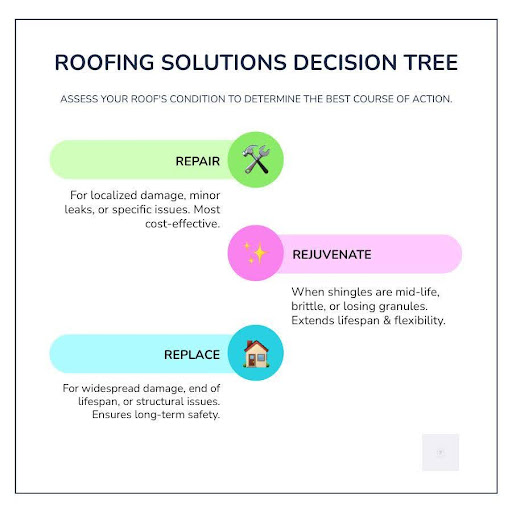 The Repair Route: When to Address Specific Issues
The Repair Route: When to Address Specific Issues
When it comes to maintaining your home, addressing minor roofing issues promptly can save you significant time, money, and stress down the line. The repair route is often the most cost-effective and efficient solution when damage is localized, and the overall integrity of the roof remains strong. We recommend considering repairs for specific, identifiable problems rather than widespread deterioration.
Localized Damage
This refers to damage confined to a small area of the roof. Perhaps a tree branch fell, or a single section was exposed to unusually harsh weather. If the surrounding roofing material is still in good condition, a precise repair can seamlessly blend with the existing roof, restoring its protective capabilities without the need for extensive work.
Missing Shingles
One of the most common repair scenarios involves missing shingles. High winds can lift and tear off individual shingles, exposing the underlayment and decking to the elements. Replacing these missing pieces quickly is crucial to prevent water infiltration and further damage. It’s a relatively straightforward repair that can significantly extend the life of your roof.
Curled Shingles
Asphalt shingles can begin to curl or buckle over time due to age, improper installation, or prolonged exposure to heat and UV rays. While a few curled shingles might seem minor, they can compromise the roof’s ability to shed water effectively, creating channels for moisture to penetrate. Addressing these early can prevent leaks and maintain the roof’s aesthetic appeal.
Damaged Flashing
Flashing is a critical component of your roofing system, typically made of metal, installed around chimneys, skylights, vents, and in valleys where different roof planes meet. Its purpose is to create a watertight seal. When flashing becomes bent, cracked, or corroded, it creates a direct pathway for water intrusion. Repairing or replacing damaged flashing is essential for preventing leaks in these vulnerable areas.
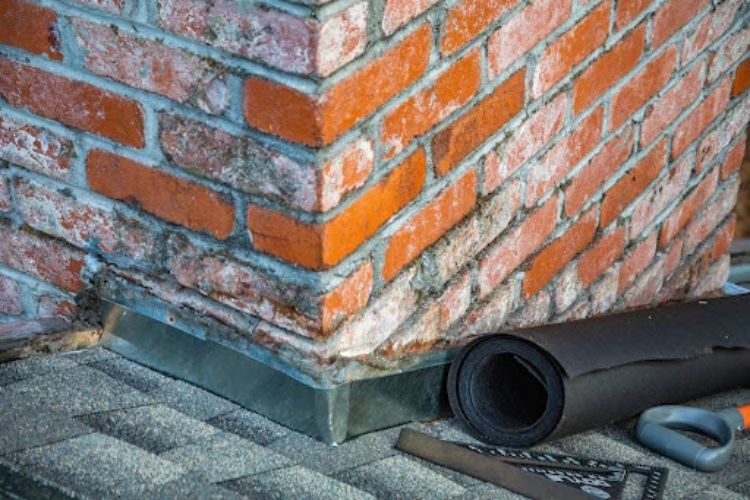 Minor Leaks
Minor Leaks
If you find a minor leak, especially if it’s isolated to one area and not indicative of widespread roof failure, a targeted repair can often resolve the problem. It’s vital to identify the exact source of the leak, which may not always be directly above where the water appears inside your home. Professional diagnosis is often recommended to ensure the repair is effective.
Proactive Maintenance
Beyond addressing existing damage, proactive maintenance is key to extending your roof’s life and minimizing the need for major interventions. This includes regular inspections, cleaning gutters, removing debris, and trimming overhanging branches. By being vigilant, we can catch small issues before they escalate into larger, more costly problems.
Choosing the repair route is a smart decision when your roof has plenty of life left but needs a little attention to specific areas. It’s about being strategic and preserving your investment.
Common Areas for Roof Repair
Understanding where your roof is most susceptible to damage can help us pinpoint potential issues and address them effectively. Certain areas of a roof endure more stress and exposure, making them prime candidates for wear and tear.
- Valleys: These are the V-shaped channels formed where two roof planes meet. Valleys collect a significant amount of water runoff, snow, and debris. If the flashing or sealing in a valley fails, it can lead to substantial leaks. Repairs here often involve replacing the underlayment and flashing, ensuring a robust, watertight seal.
- Chimneys: The intersection of a chimney and the roof is a complex area requiring specialized flashing. Over time, the sealant around the flashing can deteriorate, or the flashing itself can corrode or lift. We pay close attention to the counter-flashing and step flashing around chimneys, as these are common points of water entry.
- Skylights: While beautiful additions that bring natural light into your home, skylights are also potential leak points if not properly installed or maintained. The seals around the skylight frame can degrade, or the flashing can become compromised. Repairing skylight leaks often involves resealing or replacing the flashing components.
- Vents: Roof vents, plumbing vents, and exhaust vents penetrate the roof deck, creating openings that must be carefully sealed. The rubber boots or metal collars around these vents can crack or corrode, allowing water to seep in. Replacing these worn-out components is a common and necessary repair.
- Eaves: The eaves are the edges of the roof that overhang the wall. While generally robust, issues like ice dams in colder climates can cause water to back up under shingles at the eaves, leading to damage to the fascia, soffits, and interior walls. Repairs might involve addressing the underlying ventilation issues or replacing damaged sections.
We approach each of these areas with precision, understanding that the longevity of a repair depends on the quality of materials and the expertise of the application.
Tools Commonly Used for Minor Roof Repairs
For minor roof repairs, having the right tools makes the job safer and more efficient. While we always recommend professional assessment and repair for anything beyond the most superficial damage, understanding the tools involved can be insightful.
- Pry Bar/Flat Bar: Essential for gently lifting shingles without damaging them, especially when replacing a single shingle.
- Hammer: For securing new nails or adjusting existing ones.
- Utility Knife/Hook Blade: Crucial for cutting roofing felt, shingles, and other materials precisely.
- Caulking Gun & Roofing Cement/Sealant: For sealing small cracks, gaps, or around flashing where minor leaks might occur.
- Trowel: Used for applying roofing cement smoothly and evenly.
- Gloves: For protection against cuts, scrapes, and roofing materials.
- Safety Harness & Rope (for professionals): Absolutely critical for safety when working on a roof, especially on sloped surfaces.
- Ladders: Stable, properly secured ladders are fundamental for safe roof access.
- Tape Measure: For accurate cutting and placement of materials.
- Chalk Line: To ensure straight lines when installing or replacing shingles.
These tools, when wielded by experienced hands, allow for effective and lasting minor repairs, keeping your roof in optimal condition.
The Rejuvenation Alternative: Extending Your Roof’s Lifespan
Sometimes, a roof isn’t quite ready for replacement, but it’s showing more than just localized damage. This is where roof rejuvenation emerges as a compelling alternative. This innovative approach focuses on restoring the existing roof’s properties, effectively extending its lifespan without the need for a full tear-off and replacement. We see rejuvenation as a sustainable and cost-effective middle ground for many homeowners.
Asphalt Shingle Aging
Asphalt shingles primarily age due to the loss of their protective granules and the drying out of the asphalt binder.
- Granule Loss: The ceramic granules embedded in the asphalt protect the shingle from UV rays and physical wear. Over time, these granules detach, often visible as grit in gutters or downspouts. Once lost, the asphalt beneath is exposed, accelerating its deterioration.
- Brittleness: The asphalt in shingles contains oils that keep it flexible and resilient. Constant exposure to the sun’s UV radiation causes these oils to evaporate, making the shingles dry, brittle, and prone to cracking. This loss of flexibility reduces the shingle’s ability to expand and contract with temperature changes, leading to cracks and reduced wind resistance.
Restoring Flexibility
Roof rejuvenation treatments are designed to counteract these aging processes. They typically involve applying a specialized, eco-friendly solution that penetrates the asphalt shingles. This solution replenishes the lost oils, restoring the shingle’s flexibility and adhesion. By making the shingles pliable again, they are less likely to crack, curl, or become brittle, which in turn helps to re-secure loose granules. This process effectively brings the shingles back to a more youthful state, enhancing their protective qualities.
Sustainability
Beyond the immediate benefits to your roof, rejuvenation offers significant environmental advantages. By extending the life of your existing roof, we reduce the amount of construction waste sent to landfills. This aligns with broader sustainability goals and minimizes the environmental footprint associated with manufacturing and transporting new roofing materials. It’s a choice that benefits both your home and the planet.
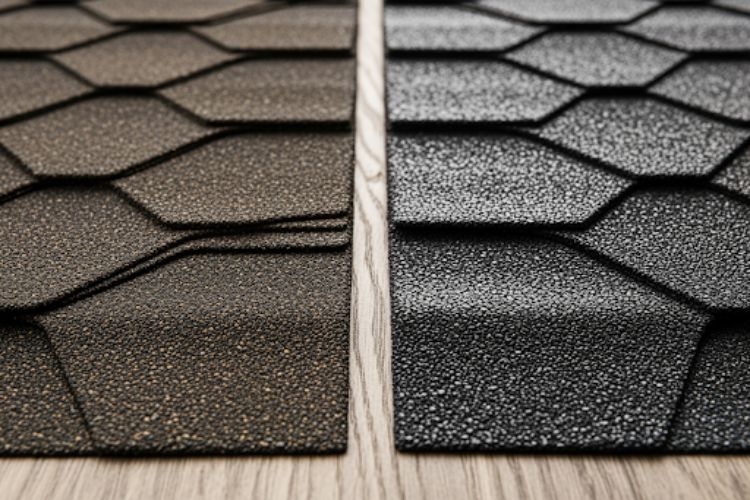 Is Rejuvenation the Right Roofing Solution?
Is Rejuvenation the Right Roofing Solution?
Deciding if rejuvenation is the right path for your roof involves evaluating its current state and your long-term goals. We consider several factors to help you make an informed choice.
- Mid-Life Shingles: Rejuvenation is most effective for asphalt shingle roofs that are in their mid-life, typically between 10 to 20 years old. At this stage, shingles often show signs of granule loss and brittleness but are still structurally sound. If your roof is too new, it may not need it; if it’s too old (e.g., beyond 25 years with severe damage), rejuvenation might not provide sufficient benefit.
- Cost-Effectiveness: Compared to a full roof replacement, rejuvenation is a significantly more affordable option. It can provide a substantial extension of your roof’s life for a fraction of the cost, offering excellent value for money. This makes it an attractive option for homeowners looking to defer the large expense of a replacement while still protecting their investment.
- Environmental Benefits: As mentioned, reducing landfill waste is a major environmental benefit. By choosing rejuvenation, you contribute to a more sustainable building lifecycle, conserving resources and energy that would otherwise be used to produce and install new roofing materials.
- How Treatments Work: The process typically involves a thorough cleaning of the roof to remove moss, algae, and debris, followed by the application of the rejuvenating solution. This solution, often plant-based and non-toxic, soaks into the asphalt, restoring its chemical properties. The treatment helps to bond granules more securely, improve the shingle’s resistance to hail and wind, and improve its fire rating. For more detailed information on specific products and their benefits, exploring various Roof rejuvenation solutions can provide valuable insights into how these technologies work to extend the life and performance of asphalt shingles.
- Extending Shingle Life: The primary goal and benefit of rejuvenation is to add years, often 5 to 10 years or more, to your roof’s functional lifespan. This extension can be particularly valuable if you’re planning to sell your home in a few years, allowing you to maintain curb appeal and protect your asset without a major investment. It also gives you more time to save for an eventual replacement.
We believe roof rejuvenation is a powerful tool in our arsenal of Roofing Solutions, offering a smart, sustainable, and economical way to maintain your home’s most important protective layer.
The Replacement Decision: When a New Roof Is Necessary
While repairs and rejuvenation can extend a roof’s life, there comes a time when a full replacement is the only viable and responsible option. This decision is significant, representing a substantial investment in your home’s future. We guide homeowners through understanding the critical indicators that signal the need for a new roof, ensuring safety, structural integrity, and long-term peace of mind.
Widespread Damage
Unlike localized issues, widespread damage affects a large portion of the roof. This could manifest as extensive shingle loss, cracking, blistering, or granule depletion across multiple sections. When the damage is pervasive, attempting to patch or refresh individual areas becomes impractical and often less effective than a comprehensive replacement. The cost of numerous repairs can quickly approach or even exceed the cost of a new roof, without offering the same longevity or warranty.
End of Lifespan
Every roofing material has an expected lifespan, and once your roof approaches or exceeds this limit, its protective capabilities diminish significantly. Even if there are no obvious leaks, an old roof is inherently more vulnerable to severe weather, less energy-efficient, and can detract from your home’s value. Replacing a roof at the end of its life is a proactive measure that prevents catastrophic failure and protects your home’s structure.
Severe Storm Impact
Major weather events, such as hurricanes, tornadoes, or severe hailstorms, can inflict damage that compromises the entire roofing system. Even if the damage isn’t immediately visible or doesn’t cause leaks right away, the underlying layers, decking, or structural components could be weakened. A professional inspection after a severe storm is crucial. If the damage is extensive, a replacement ensures your home is fully protected against future weather challenges.
Structural Concerns
Beyond the roofing material itself, sometimes the underlying structure of the roof can be compromised. This might include sagging rooflines, significant rot in the decking, or damage to the rafters. These issues often necessitate a full tear-off to access and repair the structural elements before a new roofing system can be installed. Addressing structural concerns is paramount for the safety and stability of your entire home.
When faced with these conditions, we advocate for a full roof replacement. It’s an investment that safeguards your home, improves energy efficiency, improves curb appeal, and provides the assurance of a new warranty.
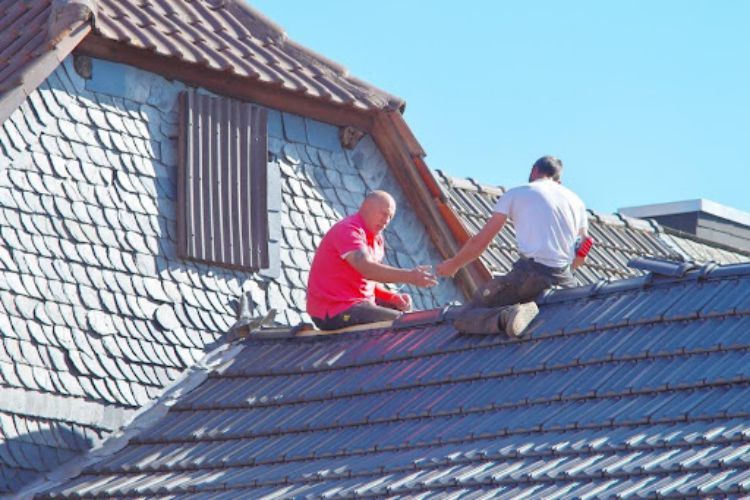 Understanding the Full Replacement Process
Understanding the Full Replacement Process
A full roof replacement is a comprehensive project that involves several critical steps, each designed to ensure the longevity and performance of your new roofing system. We believe in transparency and educating homeowners about what to expect.
- Tear-off vs. Roof-over: The initial decision is whether to undertake a “tear-off” or a “roof-over.” A tear-off is the removal of all old roofing materials down to the roof deck. This enables a comprehensive evaluation of the decking and gives a clean slate for the new installation, assuring improved performance and frequently extending the warranty. A roof-over, or re-roof, involves installing new shingles directly over one existing layer of shingles. While seemingly more economical initially, it can hide underlying issues, add excessive weight, and may not be permitted by local building codes or manufacturer warranties. We almost always recommend a full tear-off for optimal results.
- Decking Inspection: Once the old roofing materials are removed, the roof deck is fully exposed. This is an important time to evaluate the decking (usually plywood or OSB) for any symptoms of decay, water damage, or structural instability. Any damaged parts are fixed or replaced to provide a strong, secure base for the new roof.
- Underlayment Options: After the decking is prepped, a new underlayment is installed. This protective layer, usually synthetic felt or asphalt-saturated felt, provides an additional barrier against moisture, especially during installation or if a shingle is damaged. High-quality underlayment contributes significantly to the overall waterproofing of the roof.
- Ice & Water Shield: In colder climates or areas prone to heavy rain, an ice and water shield membrane is applied to vulnerable areas such as eaves, valleys, and around penetrations (chimneys, skylights, vents). This self-adhering, waterproof membrane forms an impenetrable barrier against water backup from ice dams or wind-driven rain, offering superior protection where it’s needed most.
- Proper Ventilation: A well-ventilated attic is vital for the health and longevity of your roof and home. Proper ventilation helps regulate attic temperature, preventing heat buildup in summer and moisture accumulation in winter. This, in turn, extends the life of your shingles, reduces energy costs, and prevents issues like mold and mildew. We ensure that intake (soffit) and exhaust (ridge or static) vents are correctly installed and balanced.
For a project of this scale, work with experts who offer a full range of Tall Pines’ roofing solutions, from material selection to final installation. Our comprehensive approach ensures that every component of your new roof is installed to the highest standards, providing lasting protection and value for your home.
Exploring Modern Roofing Solutions and Materials
The world of roofing has evolved significantly, offering homeowners a diverse array of materials and systems that go beyond traditional asphalt shingles. When considering a new roof, or even significant repairs, understanding these options is key to making a choice that aligns with your home’s aesthetic, your budget, and your long-term performance expectations. We believe in empowering homeowners with knowledge about the latest and most effective Roofing Solutions.
 Material Choice
Material Choice
The material you choose for your roof will dictate its appearance, durability, and maintenance requirements. Factors such as local climate, architectural style of your home, and your personal preferences all play a role in this decision.
Home Aesthetic
Your roof accounts for a significant portion of your home’s exterior visual. Different materials and styles can dramatically alter its curb appeal. From the classic look of asphalt shingles to the sleek lines of metal or the rustic charm of tile, the aesthetic impact is undeniable.
Durability Factors
The durability of a roofing material is influenced by its resistance to weather elements like wind, hail, UV radiation, and temperature fluctuations. Some materials are inherently more robust and can withstand harsher conditions for longer periods.
Energy Efficiency
Modern roofing materials can contribute significantly to your home’s energy efficiency. Options that reflect solar radiation, provide superior insulation, or facilitate better attic ventilation can lead to lower heating and cooling costs, making your home more comfortable and environmentally friendly.
Architectural Shingles vs. Traditional Options
When most people think of shingles, they often picture the traditional 3-tab asphalt shingle. However, architectural shingles have become a dominant and preferred choice for many homeowners due to their improved features and aesthetic appeal.
- Asphalt Shingles: This broad category includes both 3-tab and architectural shingles. They are the most popular roofing material in North America due to their affordability, ease of installation, and wide range of colors.
- 3-Tab Shingles: These are the most basic and economical type of asphalt shingles. They are characterized by their flat, single-layer appearance with cutouts that make them look like three separate tabs. While still available, their popularity has waned due to the superior performance and aesthetics of architectural shingles.
- Architectural Shingles (Laminated or Dimensional Shingles): These shingles are constructed with multiple layers of asphalt and granules laminated together, creating a thicker, more dimensional look that often mimics the appearance of natural wood shakes or slate. Their layered construction provides significant advantages in durability and wind resistance.
- Wind Resistance: Architectural shingles are engineered to withstand much higher wind speeds than traditional 3-tab shingles, often rated for 110-130 mph winds compared to 60-80 mph for 3-tab. This superior resistance is crucial in areas prone to strong winds.
- Longevity: Due to their robust, multi-layered construction, architectural shingles typically come with longer warranties, often 30 years to lifetime, compared to the 20-25 year warranties common for 3-tab shingles. This extended lifespan offers greater long-term value.
Feature 3-Tab Shingles Architectural Shingles Appearance Flat, uniform, single-layer Dimensional, textured, often mimics wood/slate Durability Good, but less robust than architectural Excellent, multi-layered construction Lifespan 20-25 years typically 30 years to lifetime typically Wind Resistance 60-80 mph 110-130 mph or more Cost Lower initial cost Higher initial cost, but better long-term value Weight Lighter Heavier, but distributes weight effectively Curb Appeal Basic Improved, premium look Metal and Specialty Roofing Solutions
Beyond asphalt, a range of metal and specialty roofing materials offer distinct advantages in terms of longevity, durability, and unique aesthetics.
- Standing Seam Metal: This is a premium metal roofing system characterized by raised interlocking seams that run vertically up the roof. It’s incredibly durable, weather-resistant, and offers a sleek, modern appearance. Metal roofs are known for their exceptional longevity, often lasting 50 years or more.
- Metal Shingles: Designed to mimic the look of traditional shingles, slate, or tile, metal shingles offer the durability and longevity of metal roofing with a more conventional aesthetic. They are lightweight, fire-resistant, and come in a variety of colors and finishes.
- Clay & Concrete Tiles: These materials offer a distinctive, often Mediterranean or Spanish-inspired look. They are extremely durable, fire-resistant, and can last for decades. Clay tiles are known for their natural beauty, while concrete tiles offer similar benefits at a potentially lower cost and can be molded into various shapes and colors.
- Slate Roofing: Considered one of the most premium roofing materials, natural slate offers unparalleled beauty, durability, and longevity. A properly installed slate roof can last 100 years or more. It’s highly fire-resistant and impervious to rot and insects, making it an exceptional, albeit costly, investment.
- Longevity: Metal, tile, and slate roofs stand out for their exceptional lifespans, often outperforming asphalt shingles by decades. This makes them excellent long-term investments, reducing the frequency of roof replacements.
- Fire Resistance: Many metal, clay, concrete, and slate roofing materials offer superior fire resistance, often carrying Class A fire ratings. This provides an added layer of safety and can sometimes lead to insurance premium reductions.
Low-Slope and Flat Roofing Solutions
Residential properties, particularly those with modern designs or additions, often feature low-slope or flat roofs. These require specialized roofing systems designed to handle water drainage differently than steep-slope roofs.
- Residential Flat Roofs: While no roof is perfectly flat (they typically have a slight slope for drainage), these roofs present unique challenges for waterproofing. Traditional shingle systems are unsuitable as they rely on gravity to shed water quickly.
- EPDM Systems (Ethylene Propylene Diene Monomer): EPDM is a synthetic rubber roofing membrane widely used for low-slope applications. It’s highly durable, flexible, and resistant to UV radiation and extreme temperatures. EPDM is installed in large sheets, minimizing seams and offering excellent waterproofing.
- TPO Membranes (Thermoplastic Polyolefin): TPO is a single-ply reflective roofing membrane known for its energy efficiency and resistance to punctures and tears. It’s heat-welded at the seams, creating a strong, monolithic barrier against water. TPO is available in light colors, which helps reflect sunlight and reduce cooling costs.
- Monolithic Systems: These refer to seamless roofing solutions, often achieved with liquid-applied membranes or heat-welded single-ply systems like TPO. The absence of seams significantly reduces the risk of leaks, providing superior waterproofing integrity.
- Waterproofing Integrity: For low-slope and flat roofs, waterproofing integrity is paramount. These systems are designed to prevent water from pooling and penetrating the building structure, requiring meticulous installation and high-performance materials.
We understand the nuances of each material and system, and we are committed to helping you select the ideal Roofing Solution that best suits your home’s design, your climate, and your long-term goals.
Conclusion: Making an Informed Choice for Your Home
Navigating the decision to repair, refresh, or replace your roof can feel overwhelming, but with the right information, it becomes a strategic investment in your home’s future. We’ve explored the various scenarios and Roofing Solutions available, from minor fixes to complete overhauls, and the innovative options that extend your roof’s life.
Summarizing Options
To recap, repairs are best for localized damage like missing shingles, minor leaks, or compromised flashing, where the overall roof health is still good. Rejuvenation offers a cost-effective and environmentally friendly way to extend the life of aging asphalt shingles by restoring their flexibility and granule adhesion, ideal for roofs in their mid-life. A full replacement becomes necessary when there’s widespread damage, the roof has reached the end of its lifespan, severe storm impact has compromised its integrity, or underlying structural concerns are present.
Long-Term Value
Every decision regarding your roof impacts its long-term value. A well-maintained or newly installed roof not only protects your home but also improves its curb appeal, improves energy efficiency, and provides peace of mind. Investing in the right solution today can prevent more significant and costly problems tomorrow, ultimately safeguarding your property’s value.
Importance of Inspection
Regardless of whether you suspect a minor issue or believe your roof is nearing its end, a professional inspection is the most crucial first step. Experienced roofing professionals can accurately assess the condition of your roof, identify hidden problems, and recommend the most appropriate and cost-effective course of action. Their expertise is invaluable in making an informed decision.
Protecting Your Investment
Your home is likely your largest investment, and its roof is its primary protector. Choosing the right Roofing Solution is about more than just fixing a problem; it’s about actively protecting that investment. Whether through a targeted repair, a rejuvenating treatment, or a complete replacement with modern, durable materials, ensuring your roof is in optimal condition is paramount.
Future-Proofing Your Home
By selecting durable materials, ensuring proper installation, and maintaining your roof diligently, you are essentially future-proofing your home against the elements and the passage of time. This proactive approach leads to greater comfort, lower energy bills, and a more resilient property for years to come.
We hope this guide has provided clarity and confidence in approaching your roofing decisions. A healthy roof is a happy home, and making an informed choice is the best way to ensure both.

